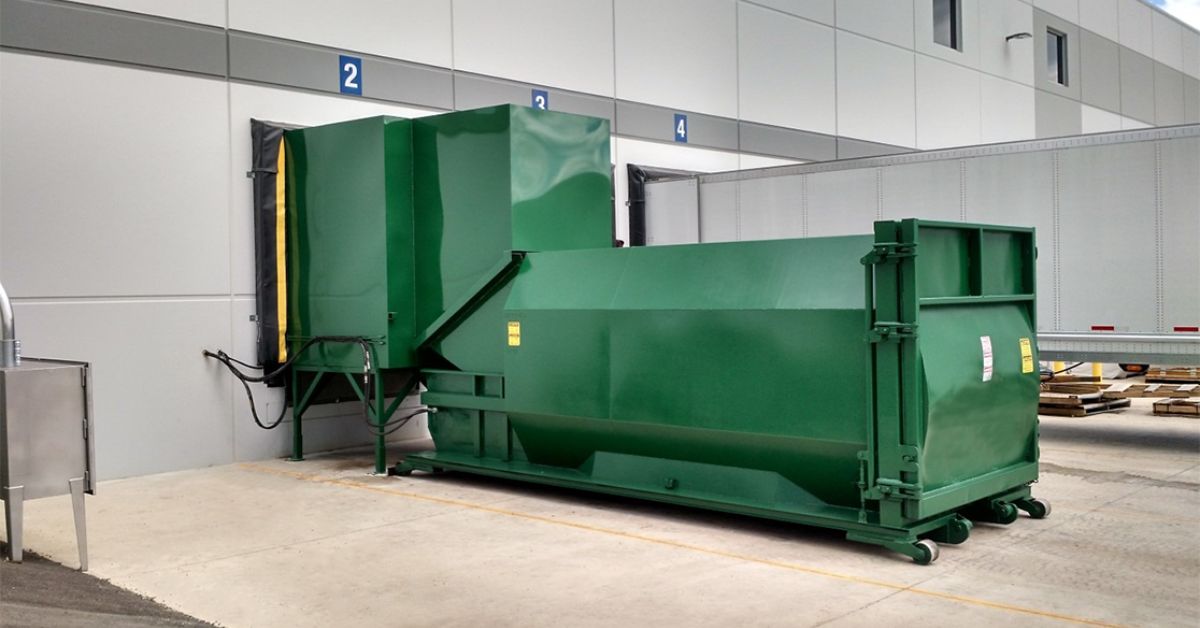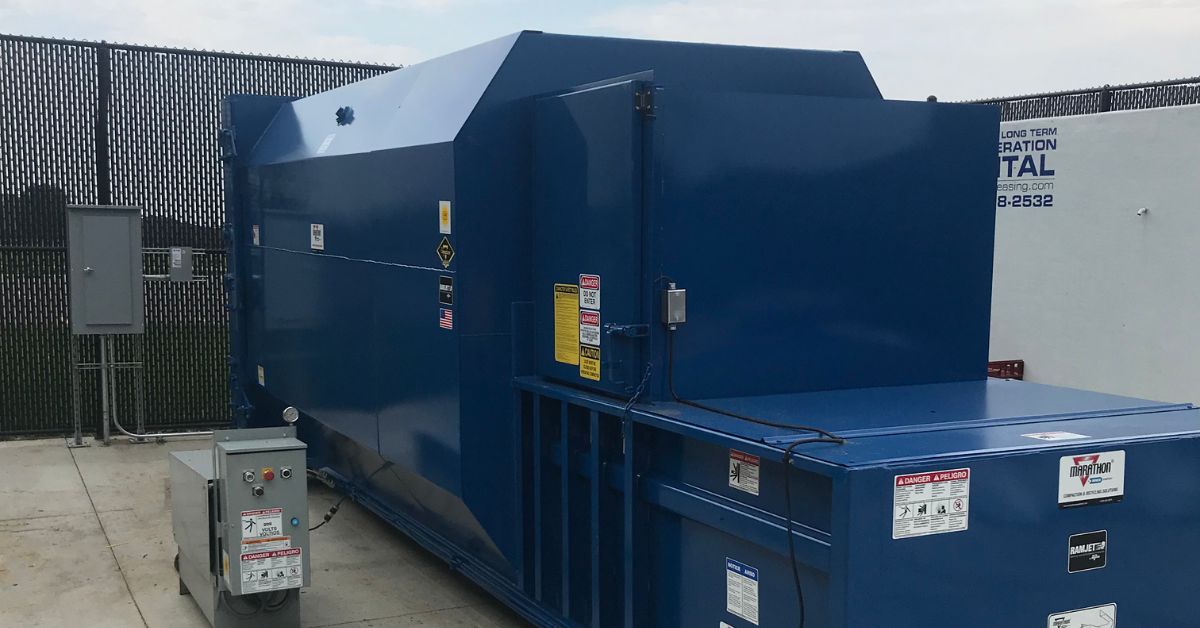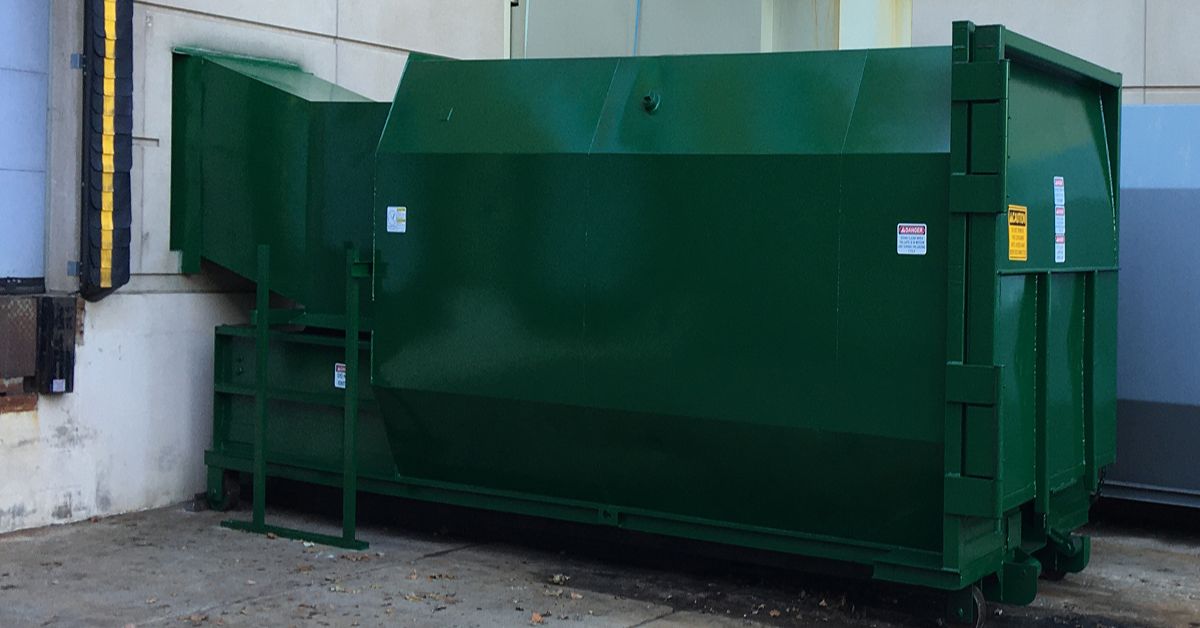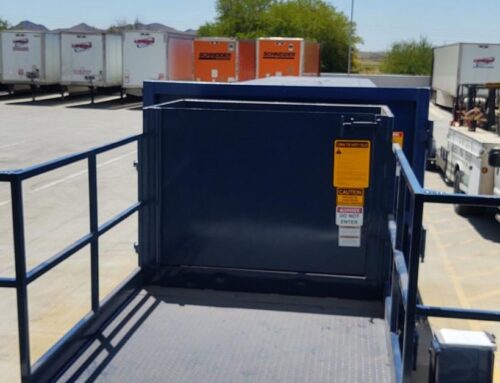
If managing waste at your property feels like an uphill task, you’re not alone. Whether you run a busy residential complex or coordinate the maintenance of a commercial office space, controlling and disposing of waste can be challenging. That’s where horizontal balers come in to make life easier.
Discover everything you need to know about horizontal balers, including how they work and why they’re game-changers for property managers and maintenance coordinators. Then, you can determine if a horizontal baler will support your waste management needs.
What Is a Horizontal Baler?
A horizontal baler compresses large amounts of recyclable waste, such as cardboard, plastic, or paper, into compact bales. Unlike vertical balers, which load materials from the top, horizontal balers feed from the side and are ideal for large-scale waste handling. They use hydraulic power to compress materials, and finished bales are bound by wire or strapping, making transportation and storage easy.
These balers are useful if your property generates a substantial amount of waste. Instead of dealing with overflowing dumpsters or hiring multiple waste pickups, you can manage large volumes of recyclables on-site.
Why Should You Consider a Horizontal Baler?
Investing in a horizontal baler offers numerous benefits that cater to property managers and maintenance coordinators like yourself. Here’s why you might consider one:
Reduce Waste Volume
Horizontal balers can reduce waste volume by up to 90 percent! Whether it’s cardboard boxes from deliveries or plastic wrapping from discarded packing materials, these machines compress it all into neat bales. Less volume means fewer pickups, saving you money.
Save on Waste Disposal Costs
With landfill fees on the rise, managing large amounts of waste isn’t cheap. Horizontal balers can lower the fees you pay by compacting waste and making it easier to recycle. Some recyclables can even bring in revenue, as baled cardboard or paper has some resale value.
Improve Operational Efficiency
Time is money for busy property managers. Horizontal balers streamline waste management by automating much of the process. Many models can operate continuously, which is perfect for facilities with constant waste streams. The saved time lets you focus on keeping your property running smoothly.
Keep Your Property Clean and Organized
Bins overflowing with cardboard or scraps of plastic can quickly turn into an eyesore and become hazardous. By baling waste, you eliminate the mess, guaranteeing your property stays clean, organized, and compliant with local regulations.
Support Sustainability Goals
If you want to conduct more eco-friendly operations, horizontal balers help you meet those goals. Compact bales of recyclables are much easier to transport to recycling centers, keeping waste out of landfills and reducing your environmental impact.

Types of Horizontal Balers
The horizontal baler you choose for your operations should match the size and volume of waste you generate. Here are the types available to you:
Closed-End Horizontal Balers
These balers are ideal for mid-sized operations, such as a residential complex or commercial property. They are compact and versatile, and they handle both cardboard and plastics with ease.
Open-End Horizontal Balers
If your property produces a continuous waste stream, this model fits the bill! With its open-end design, it can handle high volumes for large-scale waste management operations. It’s a top choice if you’re generating significant amounts of cardboard and other recyclable waste.
Auto-Tie Horizontal Balers
Are you looking for a baler that works without much manual input? Auto-tie horizontal balers automatically tie the finished bales, reducing labor while increasing efficiency. They are ideal for properties with steady waste streams every day.
How Horizontal Balers Work
Understanding how horizontal balers operate helps you determine the best model for your needs.
1. Feeding the Baler
Waste materials enter the machine through a hopper. Some models use conveyor belts to feed materials, while others require manual loading.
2. Compression Phase
Once the machine detects that enough material is in the loading chamber, hydraulic arms compress the materials into a dense block.
3. Baling and Tying
When the compression is complete, the bale is automatically or manually tied off with wire or strapping. Auto-tie balers handle this step for you, saving time and effort.
4. Ejecting the Finished Bale
Finally, the machine ejects the bale, which is ready for storage, transportation, or recycling.

Factors To Consider
Before investing in a horizontal baler, you should think about a few things to ensure it meets your property’s needs.
Volume of Waste
Calculate how much recyclable waste your property generates daily, weekly, and monthly. You might find vertical balers more cost-effective if these amounts are relatively small.
Available Space
Horizontal balers take up considerably more space than vertical models. Ensure you have the required square footage for installation.
Type of Waste
Some horizontal balers are better for specific waste types (for example, cardboard over plastics). Consider the primary materials you’ll need to bale.
Automation Features
Do you need advanced automation, such as auto-tie or conveyor feeding? Automated balers reduce labor costs but come at a higher upfront expense than balers with manual features.
Budget
While horizontal balers pay for themselves over time, their initial cost can be high. Factor in maintenance and operator training costs when calculating your budget. If you’re looking for a more cost-effective and convenient option, consider renting your baler instead of buying it.
Renting a Horizontal Baler
At Compactor Rentals of America, our horizontal baler rental program offers the industry’s most organized service approach. By renting your baler through our comprehensive program, your company will enjoy the perks of this machinery while saving money.
- Our rental agreement includes preventive maintenance and service expenses.
- You’ll be part of a fully vetted manufacturing network.
- We’ll give you the opportunity to profit from your commodities.
- As part of our rental program, you’ll have a service manager who is exclusive to your business.
- You can spend your capital on core projects instead of purchasing equipment.
- Our comprehensive service approach is designed to avoid downtime.
Maintenance Tips for Longevity
Once you’ve invested in a horizontal baler, regular maintenance keeps it in top condition.
- Remove debris from the machine daily to prevent jams or clogs.
- Lubricate the hydraulic arms and belts so that they function smoothly.
- Perform routine checks for wear and tear on wires, belts, and other parts.
- Make sure your team knows how to operate the baler safely and correctly.
Is a Horizontal Baler Right for Your Property?
Now that you understand everything you need to know about horizontal balers, you’re ready to take waste management to the next level. If waste generation is a consistent issue at your property, a horizontal baler might be the solution you need. These machines bring cost savings, improved waste handling, and environmental benefits to the table.
Whether you’re managing a residential property or a commercial space, the convenience of quickly handling large amounts of waste makes horizontal balers worth consideration. Looking to learn more or explore your options? Reach out to Compactor Rentals of America make a well-informed choice for your property.


